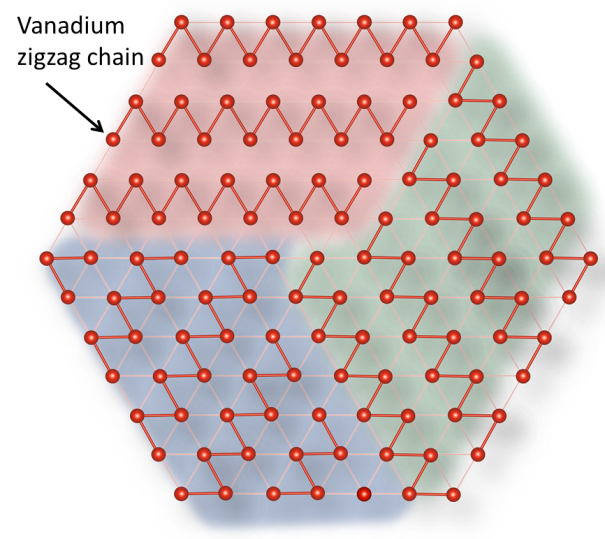Some solid crystals, in which atoms are regularly aligned, spontaneously deform their lattices to form regular patterns at low temperatures. These patterns are stable only at low temperatures, and are thought to disappear when the temperature exceeds the phase transition temperature. In the inorganic crystal consisting of lithium, vanadium, and sulfur studied here, vanadium forms a planar triangular lattice, and below the phase transition temperature, triangular motifs of three neighboring vanadium atoms appear throughout the triangular lattice. Associate Prof. Naoyuki Katayama, Prof. Koh Saito and the co-workers investigated the arrangement of vanadium above the phase transition temperature in detail using synchrotron radiation X-rays and electron beams, and found that zigzag chains of vanadium extending in various directions appear in a disordered manner with a submicrometer-order spread, and that the direction and spatial spread of these zigzag chains change in seconds under electron irradiation. This time-dependent change in the direction of the zigzag chains is a characteristic of plastic crystals, a type of soft matter, and this research shows a new direction for the development of functional materials called "inorganic plastic crystals.
This work was published in npj Quantum Materials on Feb. 18, 2021*.
*N. Katayama, K. Kojima, T. Yamaguchi, S. Hattori, S. Tamura, K. Ohara, S. Kobayashi, K. Sugimoto, Y. Ohta, K. Saitoh, and H. Sawa "Slow dynamics of disordered zigzag chain molecules in layered LiVS2 under electron irradiation", npj Quantum Materials, 6 (2021)16.
DOI : https://doi.org/10.1038/s41535-021-00313-w



